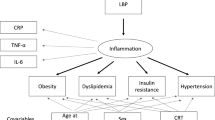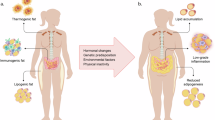Abstract
Background:
Obesity is strongly associated with cardiovascular diseases including systemic hypertension, coronary artery disease and heart failure. Despite several investigations the pathophysiological mechanisms involved remain unclear. We have previously shown that adipose tissue exerts a highly potent activity with an acute depressant effect on cardiomyocytes, thus suggesting direct involvement of adipose tissue in the development of heart dysfunction.
Objective and Design:
This study investigates the effects of adipocyte factors obtained from subcutaneous adipose tissue on the whole cardiac function by using isolated perfused rat hearts in a Langendorff mode. We recorded changes in coronary flow, developed isovolumetric left ventricular pressure, contraction rate and relaxation rate.
Results:
We observed a significant decrease in heart contractility parameters as well as in coronary flow within a few seconds of incubation with adipocyte factors. The cardiodepressant effects could not be blocked by the nonselective cyclooxygenase-inhibitor indomethacin. Human adipocytes release tumor necrosis factor-α, interleukin-6 (IL-6) and IL-1β into extracellular medium. These cytokines were tested for their potential effect but were, however, not responsible for the cardiodepressant effect observed.
Conclusion:
These data indicate that human adipocytes secrete factors with a strong acute depressant effect on cardiac force generation and coronary flow due to contraction of the coronary vessels, thus suggesting a direct role of adipose tissue in the pathogenesis of cardiac dysfunction.
This is a preview of subscription content, access via your institution
Access options
Subscribe to this journal
Receive 12 print issues and online access
$259.00 per year
only $21.58 per issue
Buy this article
- Purchase on SpringerLink
- Instant access to full article PDF
Prices may be subject to local taxes which are calculated during checkout





Similar content being viewed by others
References
Hubert HB, Feinleib M, McNamara PM, Castelli WP . Obesity as an independent risk factor for cardiovascular disease: a 26-year follow-up of participants in the Framingham Heart Study. Circulation 1983; 67: 968–977.
Massie BM . Obesity and heart failure—risk factor or mechanism? N Engl J Med 2002; 347: 358–359.
Wong CY, O’Moore-Sullivan T, Leano R, Byrne N, Beller E, Marwick TH . Alterations of left ventricular myocardial characteristics associated with obesity. Circulation 2004; 110: 3081–3087.
Kenchaiah S, Evans JC, Levy D, Wilson PW, Benjamin EJ, Larson MG et al. Obesity and the risk of heart failure. N Engl J Med 2002; 347: 305–313.
Lauer MS, Anderson KM, Kannel WB, Levy D . The impact of obesity on left ventricular mass and geometry. The Framingham Heart Study. JAMA 1991; 266: 231–236.
Zhou YT, Grayburn P, Karim A, Shimabukuro M, Higa M, Baetens D et al. Lipotoxic heart disease in obese rats: implications for human obesity. Proc Natl Acad Sci USA 2000; 97: 1784–1789.
Alpert MA . Obesity cardiomyopathy: pathophysiology and evolution of the clinical syndrome. Am J Med Sci 2001; 321: 225–236.
Hauner H . The new concept of adipose tissue function. Physiol Behav 2004; 83: 653–658.
Kershaw EE, Flier JS . Adipose tissue as an endocrine organ. J Clin Endocrinol Metab 2004; 89: 2548–2556.
Wajchenberg BL . Subcutaneous and visceral adipose tissue: their relation to the metabolic syndrome. Endocr Rev 2000; 21: 697–738.
Lamounier-Zepter V, Ehrhart-Bornstein M, Karczewski P, Haase H, Bornstein SR, Morano I . Human adipocytes attenuate cardiomyocyte contraction: characterization of an adipocyte-derived negative inotropic activity. FASEB J 2006; 20: 1653–1659.
Ehrhart-Bornstein M, Lamounier-Zepter V, Schraven A, Langenbach J, Willenberg HS, Barthel A et al. Human adipocytes secrete mineralocorticoid-releasing factors. Proc Natl Acad Sci USA 2003; 100: 14211–14216.
Haase H, Dobbernack G, Tunnemann G, Karczewski P, Cardoso C, Petzhold D et al. Minigenes encoding N-terminal domains of human cardiac myosin light chain-1 improve heart function of transgenic rats. FASEB J 2006; 20: 865–873.
Qiu Y, Quilley J . Vascular effects of arachidonic acid in the rat perfused heart. Role of the endothelium, cyclooxygenase, cytochrome P450, and K(+) channels. J Lipid Res 1999; 40: 2177–2184.
Kumar A, Thota V, Dee L, Olson J, Uretz E, Parrillo JE . Tumor necrosis factor alpha and interleukin 1beta are responsible for in vitro myocardial cell depression induced by human septic shock serum. J Exp Med 1996; 183: 949–958.
Nickola MW, Wold LE, Colligan PB, Wang GJ, Samson WK, Ren J . Leptin attenuates cardiac contraction in rat ventricular myocytes. Role of NO. Hypertension 2000; 36: 501–505.
Sharma V, McNeill JH . The emerging roles of leptin and ghrelin in cardiovascular physiology and pathophysiology. Curr Vasc Pharmacol 2005; 3: 169–180.
Holycross BJ, Radin MJ . Cytokines in heart failure: potential interactions with angiotensin II and leptin. Mol Interv 2002; 2: 424–427.
Dixon RA, Davidson SM, Wynne AM, Yellon DM, Smith CC . The cardioprotective actions of leptin are lost in the Zucker obese (fa/fa) rat. J Cardiovasc Pharmacol 2009; 53: 311–317.
Smith CC, Mocanu MM, Davidson SM, Wynne AM, Simpkin JC, Yellon DM . Leptin, the obesity-associated hormone, exhibits direct cardioprotective effects. Br J Pharmacol 2006; 149: 5–13.
Ybarra J, Resmini E, Planas F, Navarro-Lopez F, Webb S, Pou JM et al. Relationship between adiponectin and left atrium size in uncomplicated obese patients: adiponectin, a link between fat and heart. Obes Surg 2009; 19: 1324–1332.
Shibata R, Ouchi N, Ito M, Kihara S, Shiojima I, Pimentel DR et al. Adiponectin-mediated modulation of hypertrophic signals in the heart. Nat Med 2004; 10: 1384–1389.
Kim M, Oh JK, Sakata S, Liang I, Park W, Hajjar RJ et al. Role of resistin in cardiac contractility and hypertrophy. J Mol Cell Cardiol 2008; 45: 270–280.
Janke J, Engeli S, Gorzelniak K, Luft FC, Sharma AM . Resistin gene expression in human adipocytes is not related to insulin resistance. Obes Res 2002; 10: 1–5.
Szokodi I, Tavi P, Foldes G, Voutilainen-Myllyla S, Ilves M, Tokola H et al. Apelin, the novel endogenous ligand of the orphan receptor APJ, regulates cardiac contractility. Circ Res 2002; 91: 434–440.
Berry MF, Pirolli TJ, Jayasankar V, Burdick J, Morine KJ, Gardner TJ et al. Apelin has in vivo inotropic effects on normal and failing hearts. Circulation 2004; 110: II187–II193.
Kleinz MJ, Baxter GF . Apelin reduces myocardial reperfusion injury independently of PI3K/Akt and P70S6 kinase. Regul Pept 2008; 146: 271–277.
Lamounier-Zepter V, Look C, Alvarez J, Christ T, Ravens U, Schunck WH et al. Adipocyte fatty acid-binding protein suppresses cardiomyocyte contraction: a new link between obesity and heart disease. Circ Res 2009; 105: 326–334.
Sacks HS, Fain JN . Human epicardial adipose tissue: a review. Am Heart J 2007; 153: 907–917.
Mazurek T, Zhang L, Zalewski A, Mannion JD, Diehl JT, Arafat H et al. Human epicardial adipose tissue is a source of inflammatory mediators. Circulation 2003; 108: 2460–2466.
Cheng KH, Chu CS, Lee KT, Lin TH, Hsieh CC, Chiu CC et al. Adipocytokines and proinflammatory mediators from abdominal and epicardial adipose tissue in patients with coronary artery disease. Int J Obes 2008; 32: 268–274.
Iacobellis G, di Gioia CR, Di VM, Petramala L, Cotesta D, De S et al. Epicardial adipose tissue and intracoronary adrenomedullin levels in coronary artery disease. Horm Metab Res 2009; 41: 855–860.
Iacobellis G, di Gioia CR, Cotesta D, Petramala L, Travaglini C, De S et al. Epicardial adipose tissue adiponectin expression is related to intracoronary adiponectin levels. Horm Metab Res 2009; 41: 227–231.
Parrillo JE . Pathogenetic mechanisms of septic shock. N Engl J Med 1993; 328: 1471–1477.
Moncada S, Vane JR . Pharmacology and endogenous roles of prostaglandin endoperoxides, thromboxane A2, and prostacyclin. Pharmacol Rev 1978; 30: 293–331.
Acknowledgements
We gratefully acknowledge the expert technical assistance of Uta Buro. We thank Dr M Weiße-Lögering, Pirna Hospital and her team for the help in obtaining human adipose tissue, and Kathleen Eisenhofer for proofreading this paper. This study was partly supported by the ‘Kompetenznetz Adipositas (Competence Network for Obesity)’ funded by the German Federal Ministry of Education and Research (Grant 01GI0833).
Author information
Authors and Affiliations
Corresponding author
Ethics declarations
Competing interests
The authors declare no conflict of interest.
Rights and permissions
About this article
Cite this article
Look, C., Morano, I., Ehrhart-Bornstein, M. et al. Adipocyte-derived factors suppress heart contraction. Int J Obes 35, 84–90 (2011). https://doi.org/10.1038/ijo.2010.121
Received:
Revised:
Accepted:
Published:
Issue date:
DOI: https://doi.org/10.1038/ijo.2010.121
Keywords
This article is cited by
-
Interaction of epoxyeicosatrienoic acids and adipocyte fatty acid-binding protein in the modulation of cardiomyocyte contractility
International Journal of Obesity (2015)
-
Calcium-dependent release of adipocyte fatty acid binding protein from human adipocytes
International Journal of Obesity (2014)
-
Effects of gender, ejection fraction and weight on cardiac force development in patients undergoing cardiac surgery – an experimental examination
Journal of Cardiothoracic Surgery (2013)
-
Dysfunctional Nucleus Tractus Solitarius: Its Crucial Role in Promoting Neuropathogentic Cascade of Alzheimer’s Dementia—A Novel Hypothesis
Neurochemical Research (2012)
-
BMS309403 directly suppresses cardiac contractile function
Naunyn-Schmiedeberg's Archives of Pharmacology (2011)



